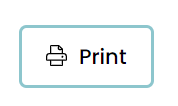Accessibility and language
Accessibility
It is important to us that Intellectual Disability Mental Health Connect has accessible content.
Accessible content means that a range of people with different communication needs can use our website.
The Intellectual Disability Mental Health Connect website aims to meet the Web Content Accessibility Guidelines (WCAG) 2.1 AA Standard.
If there is information that you cannot access, please contact us through our feedback page.
This site has been made so it can be viewed on common web browsers.
Intellectual Disability Mental Health Connect has a number of accessibility options that may help you to use the website. You can:
- adjust the contrast of the page. Contrast means the colour of the text compared to the background.
- change the text size. This is how big the writing is on the screen.
- listen to the page. Writing on the page is read aloud.
- switch between the Easy Read version and plain English version of the content (for information aimed at people with intellectual disability)
- print the page
- search for information on the website.
Adjust contrast
Adjusting contrast changes the colours on the page to make it easier to read for some people. To adjust the contrast of the page, click the Contrast button up the top of the page.

Change text size
To increase the size of the text, click the Text size button up the top of the page. There are 4 sizes to choose from.
You can also zoom in and out on your browser by pressing Ctrl and + on your keyboard.
If you are using a touch screen, you can pinch your screen to zoom in and out.

Listen to the page
To listen to the page, click the Listen button toward the top left of the page.

You will see controls appear. You can:
- pause reading out the page then restart again
- stop reading out the page
- skip backward to read out the last line again
- skip forward if you do not want the next couple of lines read out
- adjust the volume to make it louder or softer
- adjust the reading speed to make it quicker or slower
- close the player.

To learn how to use the Listen function on mobiles click here.
Turn Easy Read on and off
Most information for people with intellectual disability is available in either Easy Read or plain English.
Click the Turn Easy Read off button to turn Easy Read off.

To turn Easy Read back on, click the Turn Easy Read on button.

Print the page
If you would like to print a page, click the Print button toward the top right of the page. Only information pages have a print button.
If you would like to print an Easy Read page, download the PDF or Word version first. Click the PDF Download or Word Download buttons toward the top right of the page.

Search
You can search the website by typing one or more keywords into the search input box at the top of the website.

PDFs
There are PDFs on this website. A PDF is a file type. To view PDFs you can download Adobe Acrobat Reader for free. There is a user guide to support users of screen readers to access the content of PDF documents. If you cannot use the PDF documents on this site, you may need to download a new free version of Adobe Acrobat Reader.
Language
Intellectual Disability Mental Health Connect uses person-first language to refer to people with intellectual disability. We use the identity-first term ‘autistic people’ to reflect the preferences of the majority of those in the autistic community. However, we acknowledge that language preferences may vary.
We use the term First Nations peoples to recognise the diversity of Aboriginal and Torres Strait Islander peoples.
Throughout we use the term ‘communicate with’ to refer to how people share and receive information. This is to be inclusive of people who use methods other than speech to communicate.